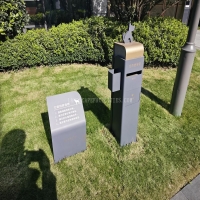Welcome to the website for landscape facilities products and knowledge.
What are the most effective ways to gather and incorporate user feedback into future designs?
In today's competitive design landscape, effectively gathering and incorporating user feedback has become paramount for creating successful products that truly resonate with audiences. The most effective approaches combine multiple methodologies to capture comprehensive insights while ensuring seamless integration into future design iterations.
Strategic feedback collection begins with implementing diverse channels that capture both qualitative and quantitative data. User surveys and questionnaires provide structured insights when designed with specific, actionable questions rather than generic inquiries. Meanwhile, in-depth user interviews uncover deeper pain points and unmet needs that surveys might miss. Modern tools like heatmaps and session recordings offer invaluable behavioral data, revealing how users actually interact with your designs rather than how they say they do.
For ongoing product development, establishing continuous feedback loops proves crucial. This includes implementing in-app feedback widgets that capture user sentiments in real-time, creating dedicated user testing groups for regular prototype validation, and monitoring social media channels for organic discussions about your product. Each channel serves a distinct purpose in building a holistic understanding of user experiences.
The true challenge lies not in collection but in effective analysis and integration. Start by categorizing feedback into clear themes and priority levels. High-impact, frequently mentioned issues should receive immediate attention, while innovative suggestions can fuel future roadmap planning. When analyzing feedback, distinguish between user requests and underlying needs—users often suggest solutions rather than articulating the core problem they're facing.
Successful integration requires establishing clear processes for translating insights into actionable design changes. Create a centralized repository where all team members can access and contribute to user feedback analysis. Implement regular cross-functional review sessions where designers, developers, and product managers collaboratively decide which feedback to prioritize. Most importantly, close the feedback loop by informing users how their input influenced design decisions, fostering continued engagement and trust.
The most forward-thinking organizations treat user feedback not as a one-time checkpoint but as an integral component of their entire design lifecycle. By embedding user perspectives into every stage—from initial concept to post-launch optimization—designers can create experiences that not only meet but exceed user expectations, ultimately driving product success and user loyalty in an increasingly competitive digital landscape.
Related search:

Recommendation
Outdoor cat and dog feces trash can; Community pet trash can; Metal multi-color design